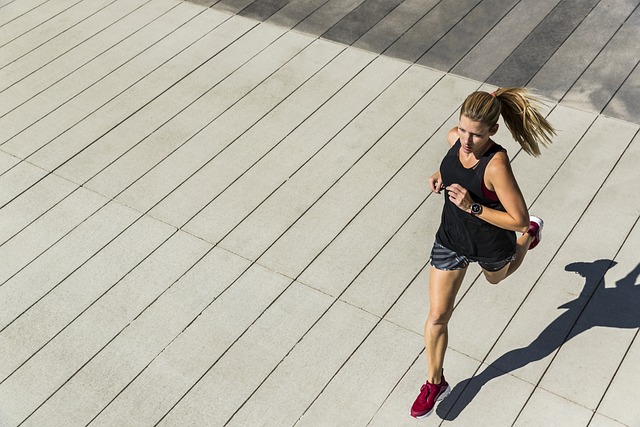According to the research, the chances of having a knee injury increase significantly after running for 1000 hours.
Most serious runners pass the 1000-hour mark within 1 year and end up in performance physical therapy clinics like CHP!
Does this mean that “bad knees” are inevitable once you choose to run? No, but it does mean that you must learn how to take care of them.
Running consists of thousands of strides repeated over and over. As a result, any problems with your running technique will add up, potentially contributing to injury.
Even if you are not a serious runner, you are likely approaching the 1000-hour running mark.
Does this mean that you are a ticking time bomb, ready to explode? Probably not if you are strength training and working on improving your running technique.
Strength Training
Implementing strength training into a consistent exercise routine has been shown to make you a more efficient runner. This means that you use less energy to run a given amount of time and as a result, are less fatigued. Less fatigue=less risk of injury. For this reason, becoming a more efficient runner is an essential part of the sports physical therapy process.
Research also shows that regular strength training improves a runner’s speed and VO2 max. VO2 max is a measure of the amount of oxygen that you can use during exercise. When you can use more oxygen as you run, you will run farther, faster!
Just remember, every runner is unique. Even if you have a running partner with the same routine, you both have unique characteristics and needs to address in a strength training program. Your strength training program must be unique to you. Cookie cutter programs don’t cut it!
Running Technique
Think of the last time that you went out for a run. Were you thinking about every stride you took? Were you aware of your foot strike? I highly doubt it!
Running is an automatic pattern that does not require conscious thought to perform. Most people listen to music or podcasts. We couldn’t do that if we needed to focus on how to run.
Unfortunately, this also means that you may be repeating the same bad pattern over and over without realizing your mistake, until it is too late. One of the most common mistakes occurs with a runners foot strike position. Runners often contact the ground in front of the body which puts more stress on the body.
Foot strike position is dependent on your body dimensions (such as limb length).
We can’t change your anatomy, but we can change the position, aka the posture, of our bodies. This is often the first step of the physical therapy process for a runner!
A “stacked” posture will change your foot strike so that it occurs directly underneath the body. This results in a more efficient stride and less stress to the body. To learn about the stack, check out a previous article that I wrote on Learn to Stack Like a Snowman.
Attempt the drill below to feel what it is like to have a stacked posture while running.
- Grab a partner and ask him/her/they to stand behind you (you are also standing)
- Have your partner press down on your shoulders with a moderate amount of force and do not let them squish you
- As you resist them you should feel your abs engage and feel as if you are standing tall
- Next, attempt to shift your weight onto 1 leg and pick up your opposite foot while resisting the force of your partner
- Try the other leg
For a video on this drill, click here.
After performing this drill, you should have a better sense of your optimal running posture. Try to replicate this feeling the next time you go on a run!








